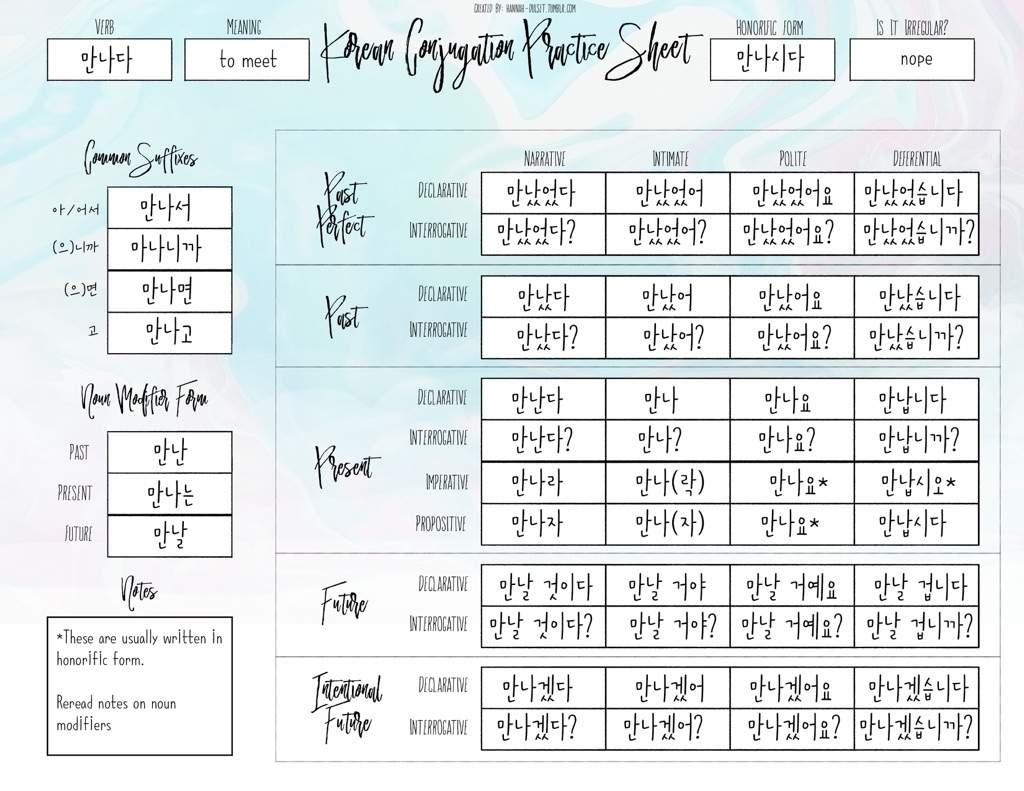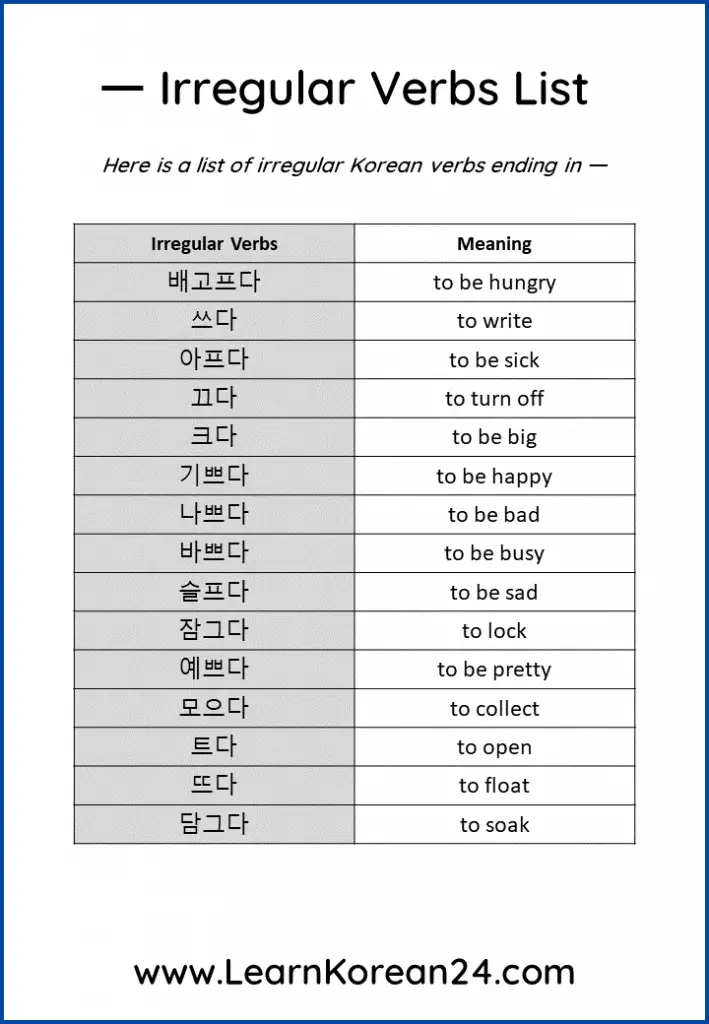
So let’s look at the examples we just did. Once you know the casual form, the polite form is easy. The 오 + 아 combine in the same Hangul block to create 와 ( wa). If the vowel is the same, you just drop the 다 as we did with 가다. In this case, it just becomes 가 because the Hangul block already ends in ㅏ.Īny time the verb ends in a vowel after dropping 다, 아 or 어 combine with the vowel. Now, we need to see what vowel is in the Hangul block. Let’s use 먹다 ( meokda, “to eat”) as our first example. If it’s anything else, you’ll add 어 ( eo). Then, if the last vowel remaining is ㅏor ㅗ, you’ll add 아 ( a). Learning this one first will help with polite form, so we’ll start here.įirst, you may have noticed that all the verbs end in 다 ( da).

That way, you can take the verbs from the list above, which are in dictionary (or infinite) form, and change them to the level of speech you need.
#KOREAN VERB CONJUGATION HOW TO#
But today, I’ll show you how to conjugate into Korean present tense. There’s a lot to Korean conjugation because there are so many verb endings in Korean. Formal speech is for elders, bosses, and those with higher authority. Casual form is used with peers the same age as you or younger. You’ll most often use polite verb endings the most, as it’s most acceptable in any situation. Formal verb endings: 가다 → 갑니다 ( gamnida).Let’s look at them with the verb 가다 ( gada, “to go”). In Korean, there are three main speech patterns.

One way Koreans do that is through verb endings. Korean society is very hierarchical, which means you’re expected to show an appropriate amount of respect to others. There are no genders, and Korean verb endings don’t change based on the subject.īut Korean verbs do change based on who you’re talking to. Korean Verb EndingsĪs I mentioned at the beginning, in Korean, you don’t need to conjugate the verb to match the subject. While other parts of the sentence can move around a bit, the verb will always come at the end of the sentence in Korean. ( na-neun geogi-e gada.) → “I there go.” → Subject-object-verb In English, we use a subject-verb-object sentence structure, or SVO.īut in Korean, the order is subject-object-verb, or SOV. If you’re new to Korean grammar, then the first thing you need to know is Korean sentence structure is different from that of English or romance languages.

To call (on the phone): 전화하다 ( jeonhwa hada).So that’s what I’ve done here.īelow is a list of 101 common Korean verbs you’ll use every day, broken up into 7 categories based on daily activity.

Because if we don’t know any Korean verbs, we can’t express much, right?įor ease of studying, I like to categorize similar words together so it’s easier to memorize. Our main focus today is first learning Korean verbs to boost our vocabulary. (By the way, if you haven’t yet, check out the 101 core Korean words you need to know to understand about 50% of Korean.)ġ01 Verbs In Korean to Boost Your Vocabulary


 0 kommentar(er)
0 kommentar(er)
